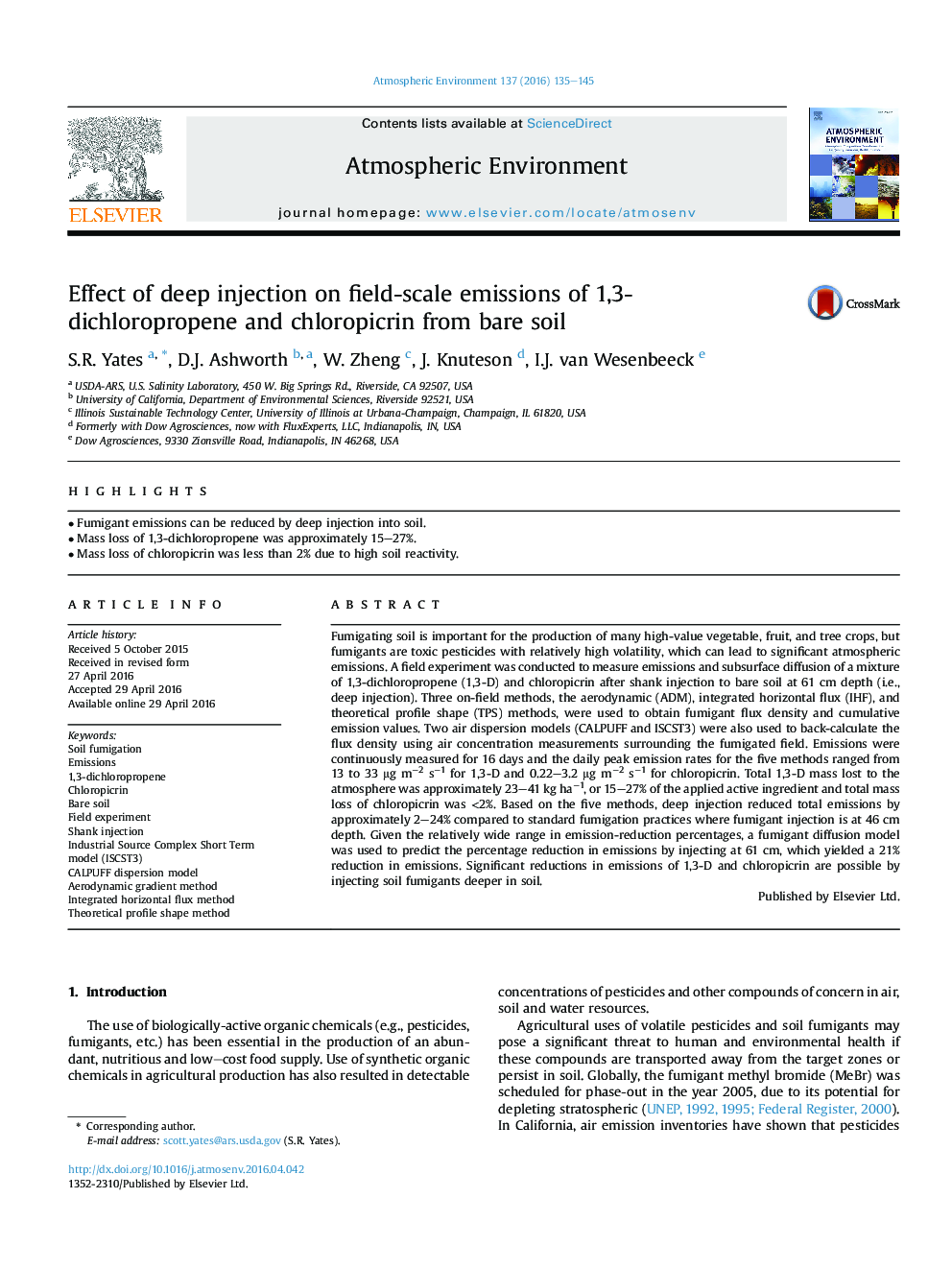| کد مقاله | کد نشریه | سال انتشار | مقاله انگلیسی | نسخه تمام متن |
|---|---|---|---|---|
| 4438052 | 1620337 | 2016 | 11 صفحه PDF | دانلود رایگان |
• Fumigant emissions can be reduced by deep injection into soil.
• Mass loss of 1,3-dichloropropene was approximately 15–27%.
• Mass loss of chloropicrin was less than 2% due to high soil reactivity.
Fumigating soil is important for the production of many high-value vegetable, fruit, and tree crops, but fumigants are toxic pesticides with relatively high volatility, which can lead to significant atmospheric emissions. A field experiment was conducted to measure emissions and subsurface diffusion of a mixture of 1,3-dichloropropene (1,3-D) and chloropicrin after shank injection to bare soil at 61 cm depth (i.e., deep injection). Three on-field methods, the aerodynamic (ADM), integrated horizontal flux (IHF), and theoretical profile shape (TPS) methods, were used to obtain fumigant flux density and cumulative emission values. Two air dispersion models (CALPUFF and ISCST3) were also used to back-calculate the flux density using air concentration measurements surrounding the fumigated field. Emissions were continuously measured for 16 days and the daily peak emission rates for the five methods ranged from 13 to 33 μg m−2 s−1 for 1,3-D and 0.22–3.2 μg m−2 s−1 for chloropicrin. Total 1,3-D mass lost to the atmosphere was approximately 23–41 kg ha−1, or 15–27% of the applied active ingredient and total mass loss of chloropicrin was <2%. Based on the five methods, deep injection reduced total emissions by approximately 2–24% compared to standard fumigation practices where fumigant injection is at 46 cm depth. Given the relatively wide range in emission-reduction percentages, a fumigant diffusion model was used to predict the percentage reduction in emissions by injecting at 61 cm, which yielded a 21% reduction in emissions. Significant reductions in emissions of 1,3-D and chloropicrin are possible by injecting soil fumigants deeper in soil.
Journal: Atmospheric Environment - Volume 137, July 2016, Pages 135–145
